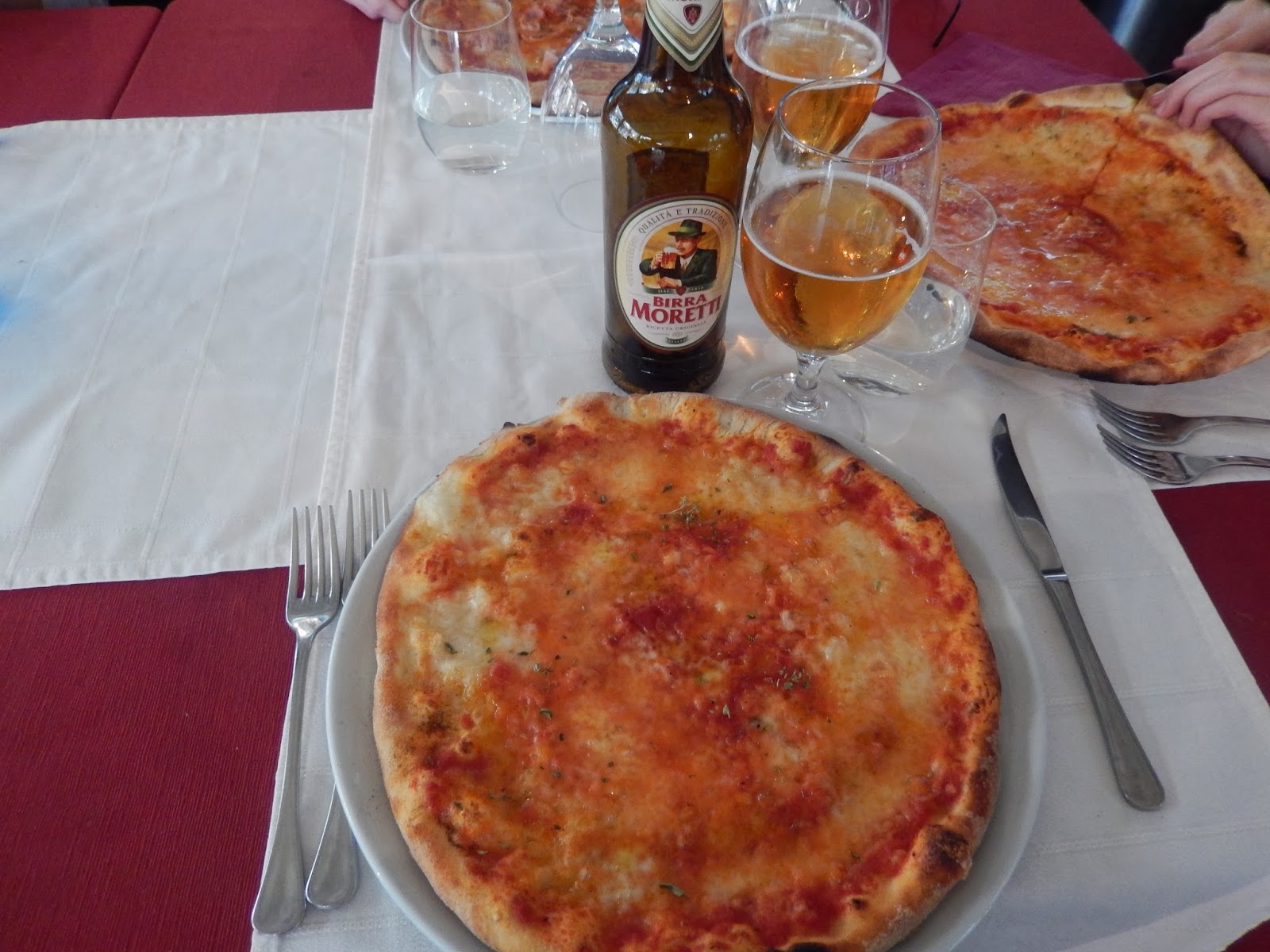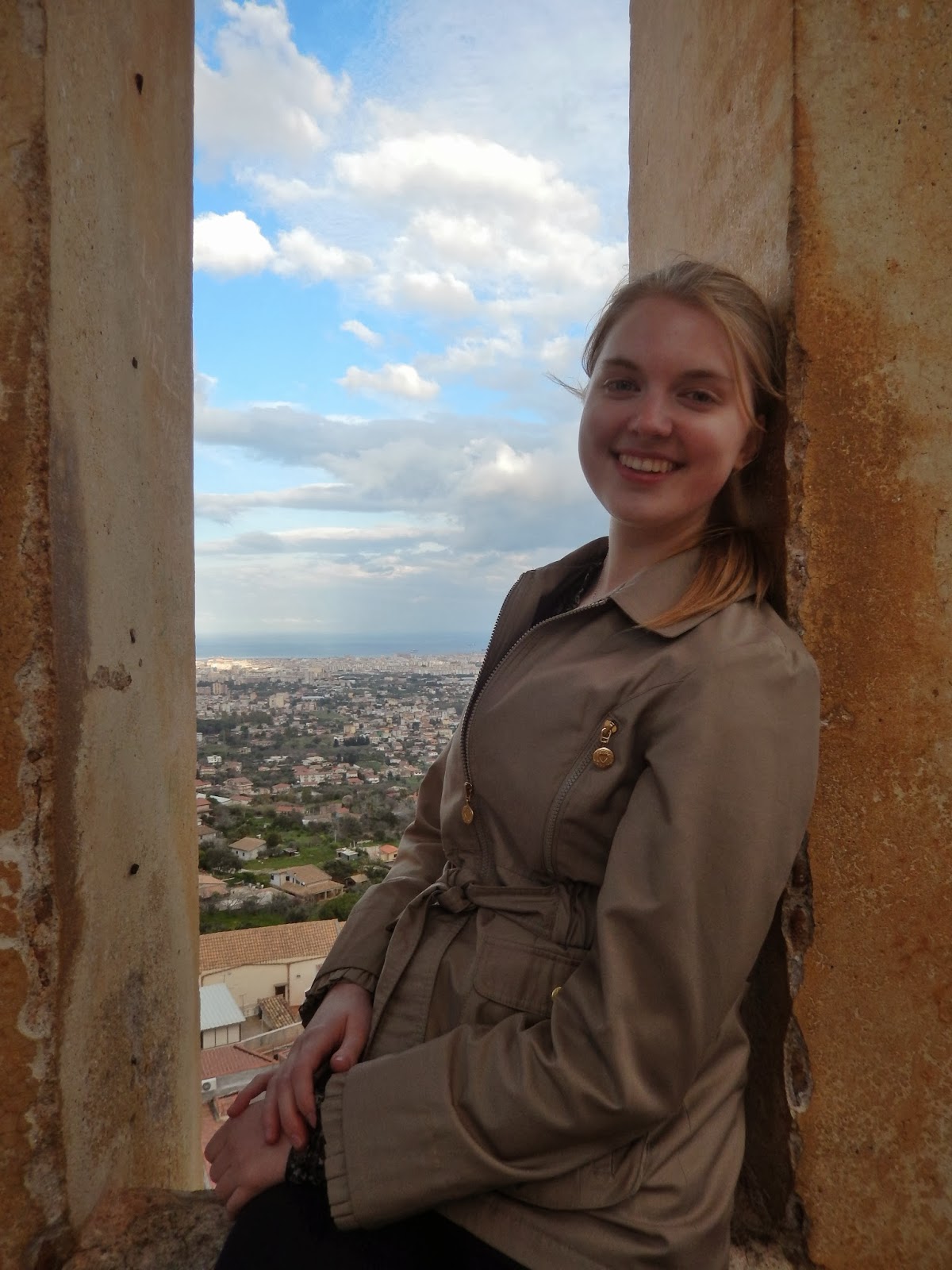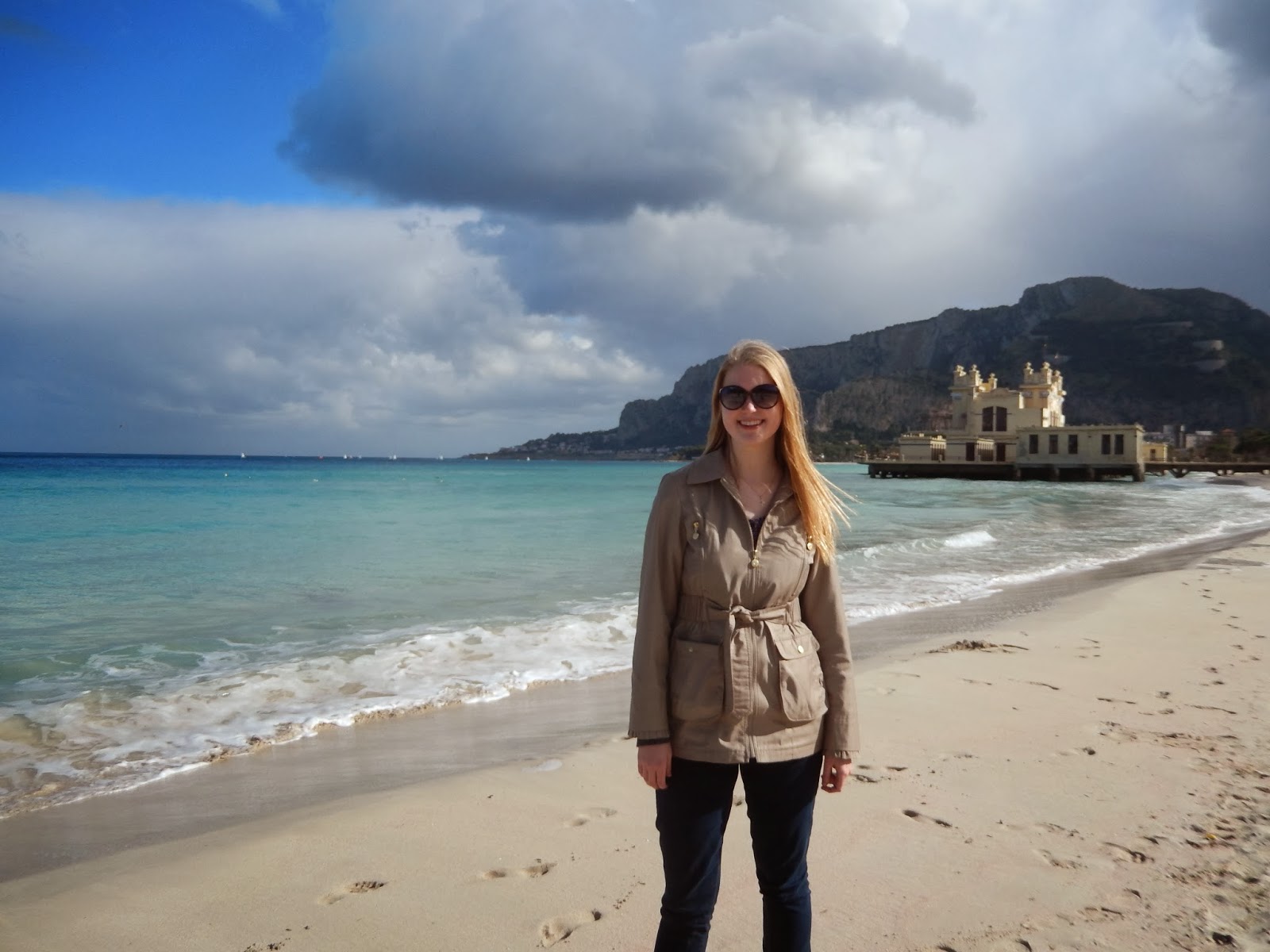Though we had to squeeze in our visit in late February - the dead of winter back in the American Midwest - we were greeted with warm spring weather and even warmer hospitality in a blitz of a trip that reminded me why I fell in love with Southern Italy during my Matera trip last November. Its rugged beauty emanates from craggy mountains and aquamarine coasts, rocky highlands and open skies. Its cities are a deeply human mix of grit, wit, and passion that mirrors the people themselves, aflame with an unapologetic identity. To this day the South remains poorer, rougher, and less "modernized" than its northern half - with whom it still strikes a rather prickly truce - and favors energy over elegance, zest over sophistication, defiance over deference. Don't get the impression that the South is backward or underdeveloped, but with roots still heavily in the traditional and agrarian lifestyle, and with unemployment rates uncomfortably high, it lacks the (stereotypical) gentle contentment of the North and replaces it with a fiercer, friendlier gusto! Sicily is the jewel of the Italian South - in spite of an eternal grudge between i siciliani and the mainlanders - and exemplifies the southern culture beautifully while adding its own spectacular signature to the mix.
Regrettably, we only had two nights to spare for our Sicilian adventure, so we headed for the capital city of Palermo along the northern coast of the island. Most of Palermo's seedier side is easily avoidable and not so much a danger to tourists as to locals who may have crossed the Mafia's bad side, but it was not without trepidation that we walked from the train station to our bed and breakfast, a charming establishment not far away. The goal of "blending in" has long been driven from my mind in any city in Italy, for even with increased globalization there is a certain shortage of blonde, fair-skinned, blue-eyed Italian women who also happen to be six feet tall. But at least one can pretend to be familiar with her surroundings, and so with some sage advice from the friendly train conductor we marched confidently off in the direction of our B&B. Thankfully - and not surprisingly - we were left totally alone, though we did manage to encounter two suspicious-looking women readying up for what looked like a potential cat fight.
We arrived too late on Friday night to do anything, so we rose early on Saturday to make up for lost time. Our hosts provided a lovely Italian breakfast - pastries, coffee, and Nutella - topped off with a glass of fresh blood orange juice. Sicily is a volcanic island whose fertile soil is perfect for growing citrus fruits like these arance rosse, and we knew from our first sip that we were a long way from chilly Rome. At our host's encouragement, we headed to the Ballarò market to see what we could see. The sun illuminated Palermo's streets - an oddly aesthetic mix of tumble-down brick, intricate rococo, laundry-laden clothes lines, and graffiti - and we found ourselves in the middle of a winding, bustling collection of tents and tables. Vendors called back and forth in a musical arrangement of heightening superlatives - purissima! morbidissima! bellissima! - while selling kilo upon kilo of fresh fish, eel, squid, caviar, and all manner of fresh fruits, vegetables, breads, candies, and meats, all for the cheapest prices I'd seen anywhere. We treated ourselves to some Sicilian specialties for a midmorning snack: fresh arance rosse and fragole (strawberries), just-fried panelle (chickpea fritters), and fried potatoes. Then we meandered our way down the main road to the Porta Nuova (a remaining portion of the old Norman wall), enjoyed a sunny interlude in one of Palermo's many parks, and found a lovely little trattoria to enjoy our first full Sicilian meal - pizza - next to a large, laughing, all-male party that one of my friends was quite certain were mafiosi.
Deeply satisfied with a morning of good eats and great company, we next trundled back over toward the Porta Nuova to catch a bus to Monreale. Palermo is nestled between mountains, and the small city of Monreale is up on one of the nearer slopes, known primarily for its spectacular cathedral almost entirely decorated with mosaics inside. The walls and ceilings glittered with vibrant scenes chronicling Creation, the Flood, several other Old Testament stories, and the life of Jesus Christ. Behind the altar was the striking image of Christ Pantocrator on a luminescent gold background, famous among art history students everywhere - with good reason. It was Scripture brought to life in a way more beautiful, vivid, and powerful than I'd ever seen in a church, brighter than faded frescoes and more vibrant than sculpture. But just as spectacular as the interior were the views from the rooftop, which we absorbed with as much awe as we did inside the cathedral below. The rolling mountains, dotted with colorful houses and churches, flattened into the Palermo plain and hugged a sprawling azure coastline. For almost a half hour we just stared out, taking photos that were frustratingly inadequate compared to the beauty of the landscape. Then we descended and boarded the bus back to Palermo for a delicious Sicilian dinner - pasta with tomatoes and eggplant, assorted fritti (fried antipasti with chickpeas, olives, and potatoes), soft sweet bread, and of course a cannoli - before sharing a bottle of wine and getting some shut-eye.
Next morning, after another glass of blood orange juice, we attended Mass in Palermo's Norman cathedral, took a quick look at Palermo's impressive Teatro Massimo, and then boarded another bus to Mondello, a nearby beach town. The bus ride itself afforded some exhilarating views of the Sicilian countryside, already in bloom with thousands of tiny yellow flowers climbing their way up the mountain slopes. As the beach unfolded into view, all five of us let out squeals of delight; if not for the chilly wind, it might have been a spring day at the seafront! The water was streaked with deep blues and electric greens, highlighting the magnificent grays and purples of the distant coastal bluffs. We indulged in a restaurant with a beach view for lunch, savoring our last chance at Sicilian fare (I finally managed to try pasta with swordfish and fulfill my seafood quota that is so vital to Sicilian cuisine). Then we wandered freely up and down the sandy shores, dipping our fingers and toes into the frigid seawater and chatting with some German exchange students who offered to take our photo. They told us that just the previous week it had been warm enough to swim, but sure enough in the distance we could see paddle-boarders and sailboaters braving the chill to bask in the beautiful blue. As the sun drifted out of and behind the clouds, I was able to snap photos of the scene in all different shades of light and color, like watching several days go by rather than just a few hours.
After one last gelato, we headed back to our B&B to grab our bags and leave for the airport, where we had one last taste of Sicilian friendliness when a man at the currency exchange desk offered to print one of my friend's boarding passes for free instead of sending her to the ticket counter to print one off for an exorbitant EUR 90 fee. I also managed to try an arancina, another fried treat made of rice, peas, and ragù (meat sauce) that followed in line with our attempt to try all manner of the famous Sicilian street fare.
As the sun set on the sea-soaked horizon, it struck me anew how precious my time in Italy has been, and how it has captured a piece of my heart that will forever remain here no matter where I go henceforth. I've begun planning for my inevitable return trip home, knowing that once I leave it will likely be many years until I return. But it's become a when rather than an if, for if you ever have just a taste of something delicious, something extraordinary, something life-changing, you know it's only a matter of time before you try it again. So: When I return to Il Bel Paese, I know that Sicilia will most certainly be on that itinerary, and a glass of fresh blood orange juice will be at the top of the menu.
Regrettably, we only had two nights to spare for our Sicilian adventure, so we headed for the capital city of Palermo along the northern coast of the island. Most of Palermo's seedier side is easily avoidable and not so much a danger to tourists as to locals who may have crossed the Mafia's bad side, but it was not without trepidation that we walked from the train station to our bed and breakfast, a charming establishment not far away. The goal of "blending in" has long been driven from my mind in any city in Italy, for even with increased globalization there is a certain shortage of blonde, fair-skinned, blue-eyed Italian women who also happen to be six feet tall. But at least one can pretend to be familiar with her surroundings, and so with some sage advice from the friendly train conductor we marched confidently off in the direction of our B&B. Thankfully - and not surprisingly - we were left totally alone, though we did manage to encounter two suspicious-looking women readying up for what looked like a potential cat fight.
We arrived too late on Friday night to do anything, so we rose early on Saturday to make up for lost time. Our hosts provided a lovely Italian breakfast - pastries, coffee, and Nutella - topped off with a glass of fresh blood orange juice. Sicily is a volcanic island whose fertile soil is perfect for growing citrus fruits like these arance rosse, and we knew from our first sip that we were a long way from chilly Rome. At our host's encouragement, we headed to the Ballarò market to see what we could see. The sun illuminated Palermo's streets - an oddly aesthetic mix of tumble-down brick, intricate rococo, laundry-laden clothes lines, and graffiti - and we found ourselves in the middle of a winding, bustling collection of tents and tables. Vendors called back and forth in a musical arrangement of heightening superlatives - purissima! morbidissima! bellissima! - while selling kilo upon kilo of fresh fish, eel, squid, caviar, and all manner of fresh fruits, vegetables, breads, candies, and meats, all for the cheapest prices I'd seen anywhere. We treated ourselves to some Sicilian specialties for a midmorning snack: fresh arance rosse and fragole (strawberries), just-fried panelle (chickpea fritters), and fried potatoes. Then we meandered our way down the main road to the Porta Nuova (a remaining portion of the old Norman wall), enjoyed a sunny interlude in one of Palermo's many parks, and found a lovely little trattoria to enjoy our first full Sicilian meal - pizza - next to a large, laughing, all-male party that one of my friends was quite certain were mafiosi.
The Cathedral at Palermo
The Porta Nuova
Real Sicilian pizza!
Inside the Monreale Duomo
Christ Pantocrator
Mosaics over every wall
View from the Duomo tower
Panoramic from the tower view
The Teatro Massimo
Swordfish and pasta
Gorgeous shores at Mondello
As the sun set on the sea-soaked horizon, it struck me anew how precious my time in Italy has been, and how it has captured a piece of my heart that will forever remain here no matter where I go henceforth. I've begun planning for my inevitable return trip home, knowing that once I leave it will likely be many years until I return. But it's become a when rather than an if, for if you ever have just a taste of something delicious, something extraordinary, something life-changing, you know it's only a matter of time before you try it again. So: When I return to Il Bel Paese, I know that Sicilia will most certainly be on that itinerary, and a glass of fresh blood orange juice will be at the top of the menu.













































